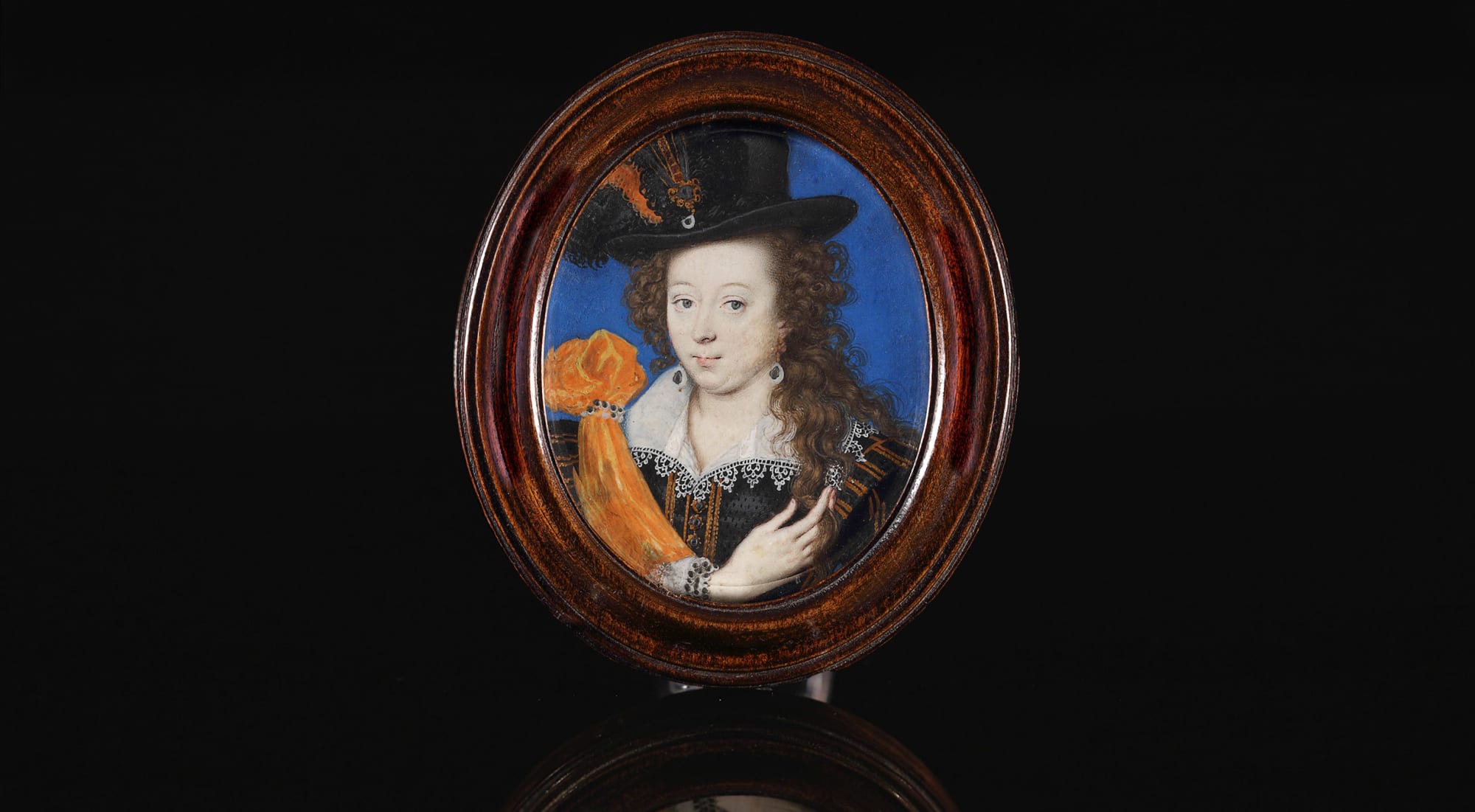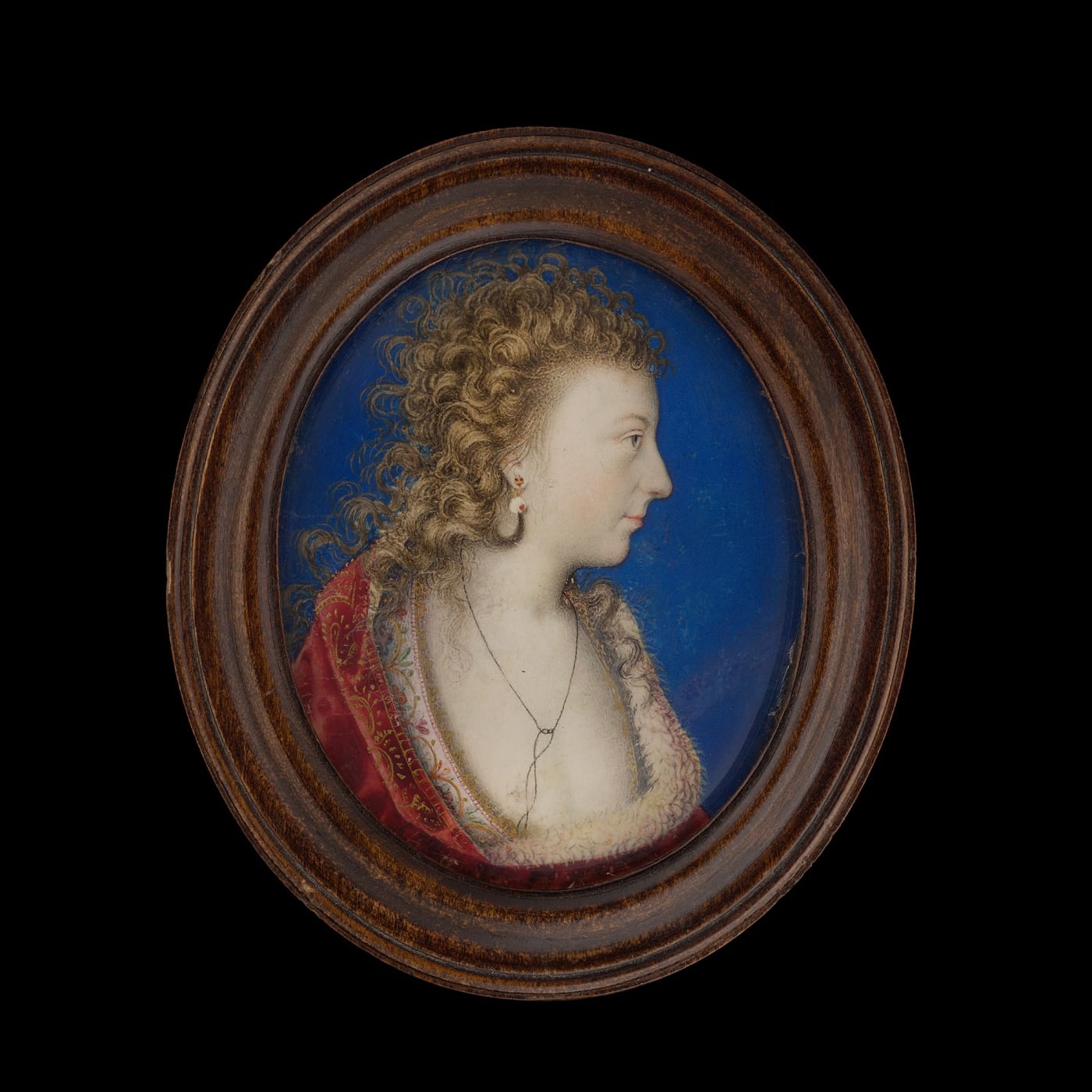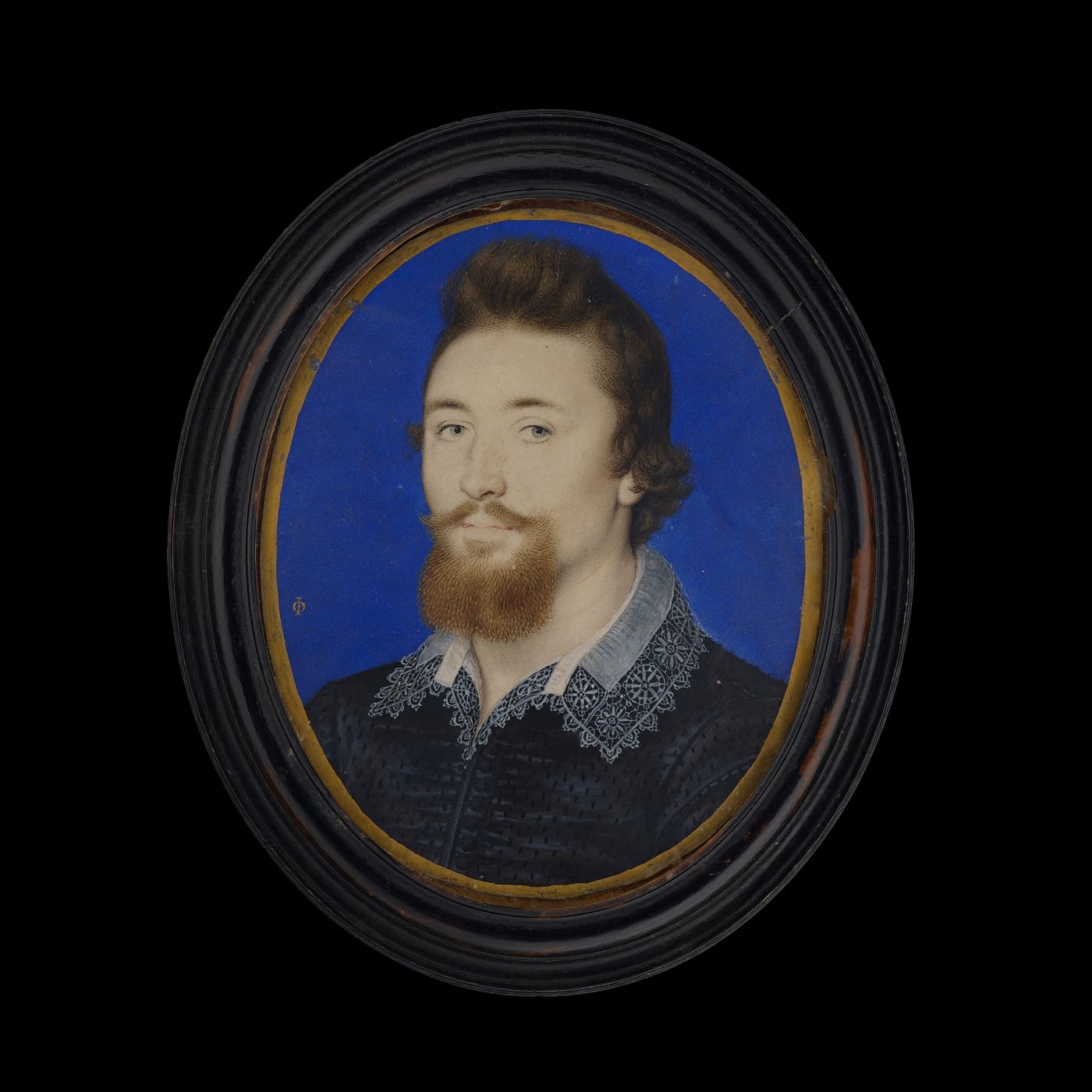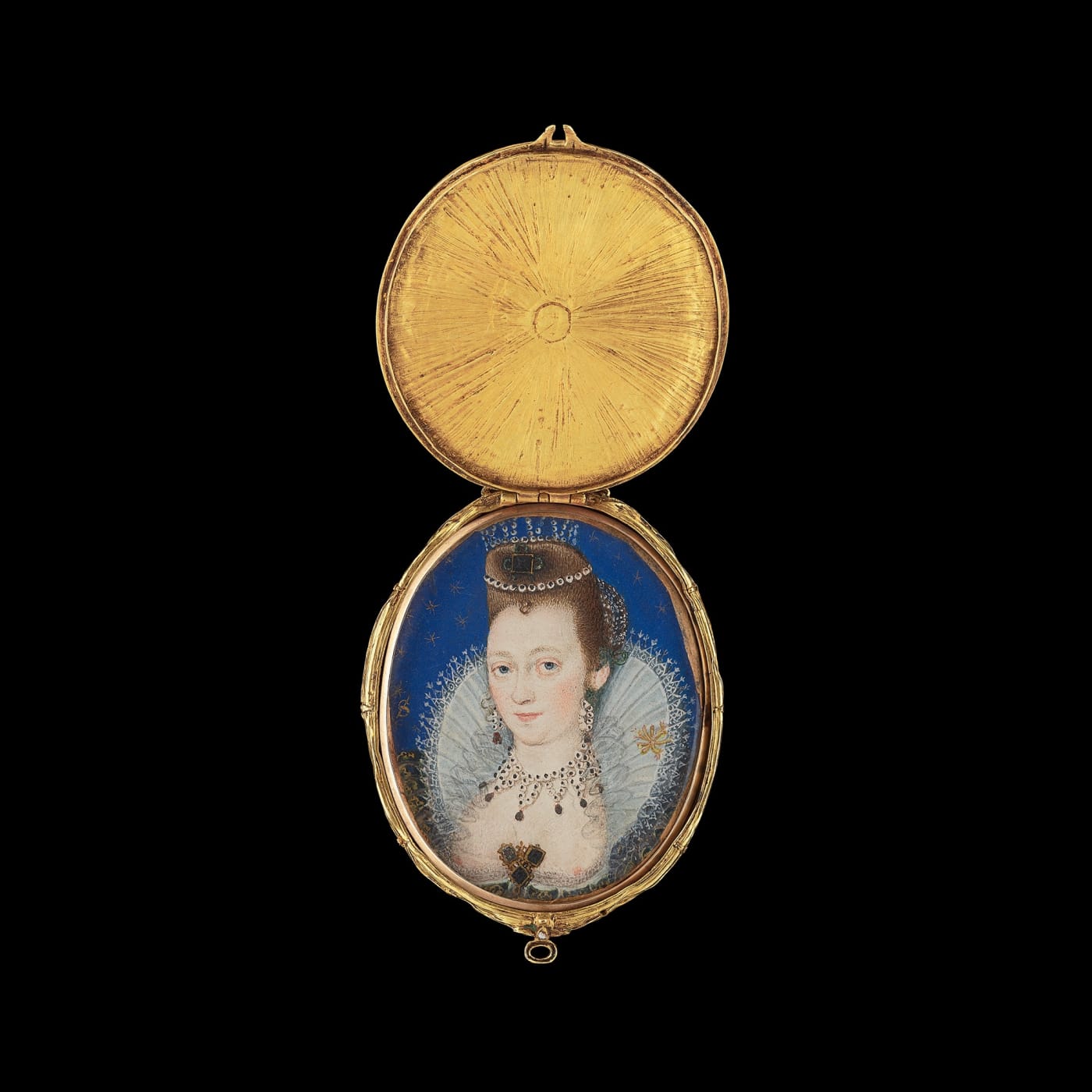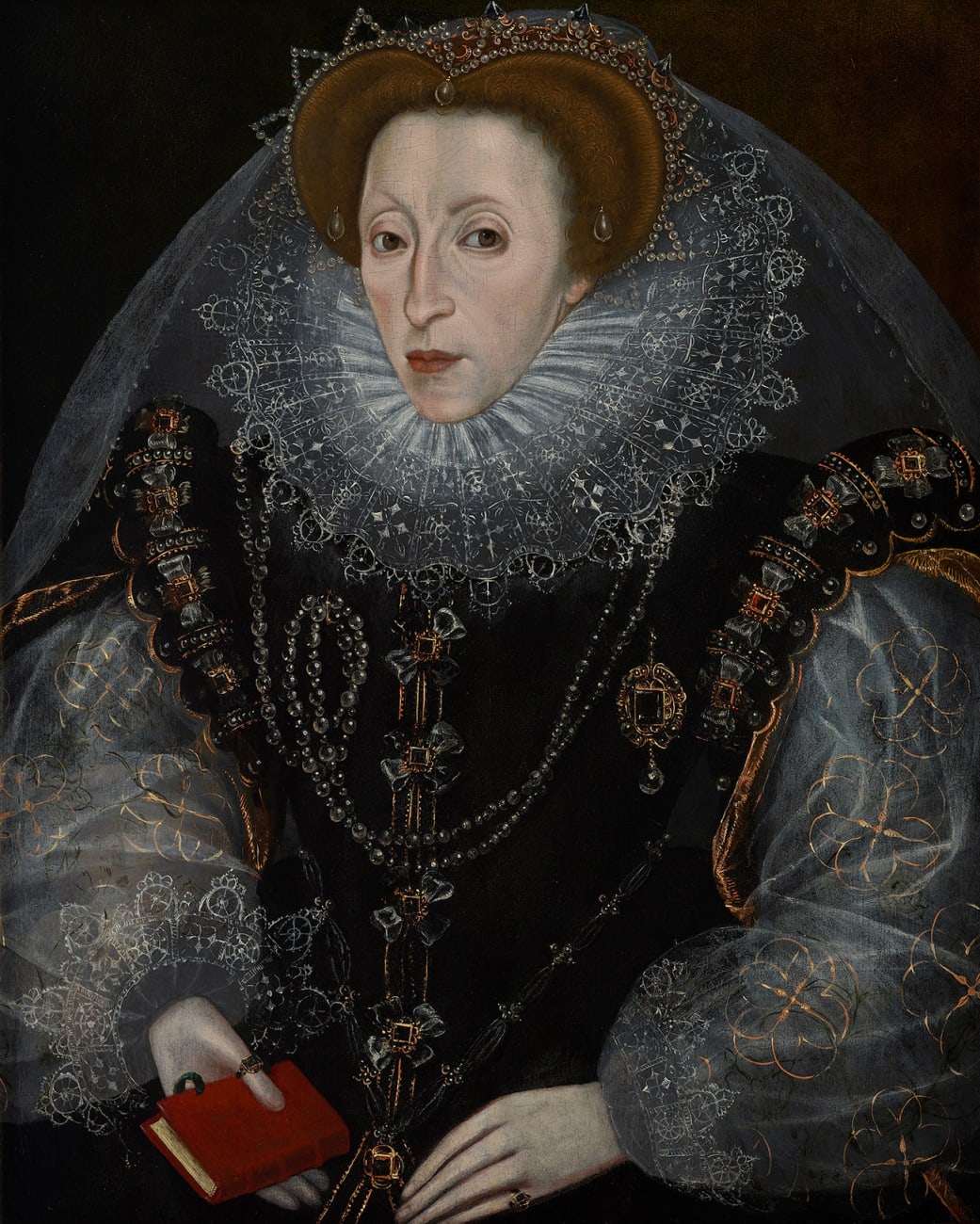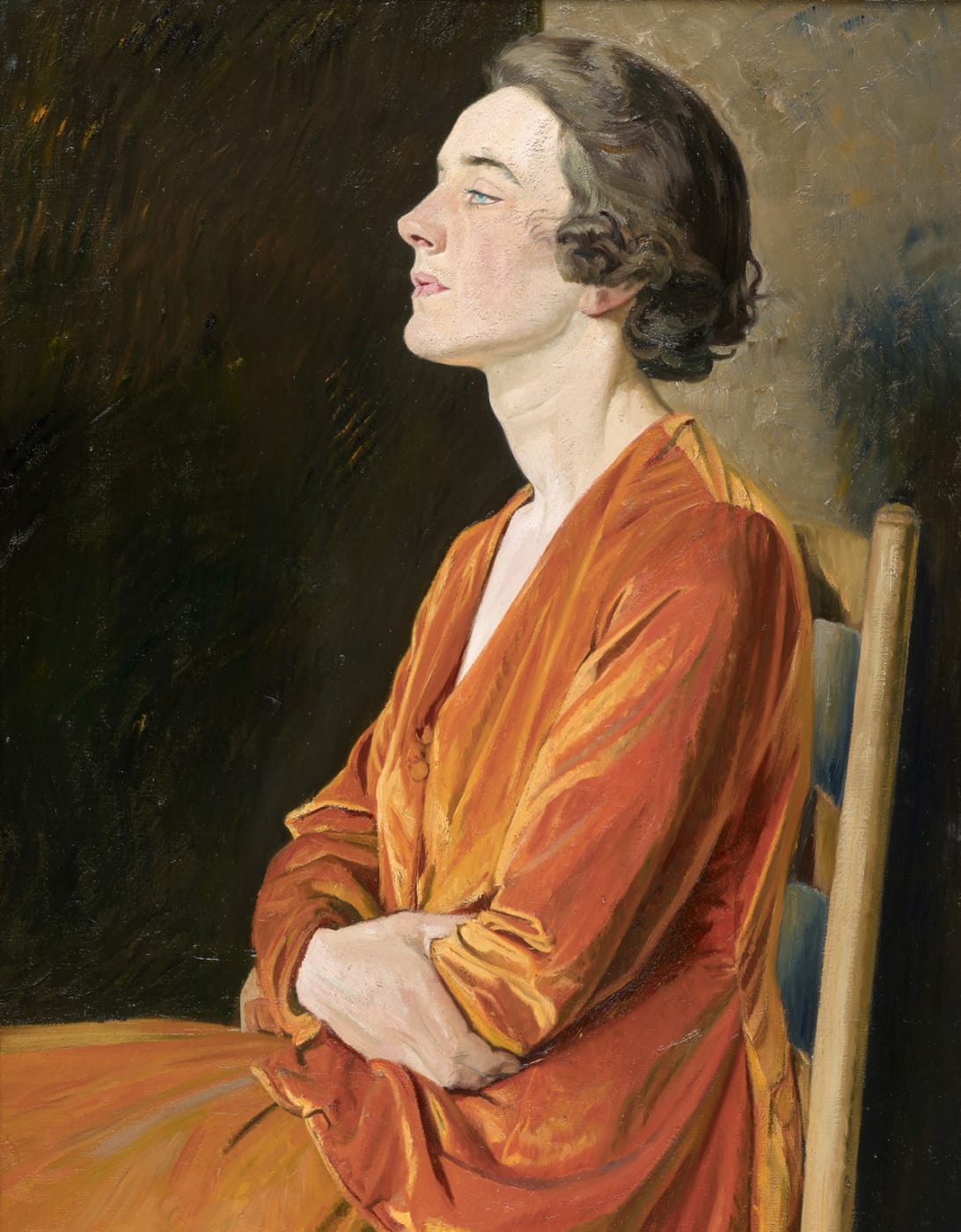Miniatures from the Bearsted Collection
An intimate exhibition of eight Elizabethan and Jacobean portrait miniatures
19 November—19 December 2025
Portrait miniatures on display
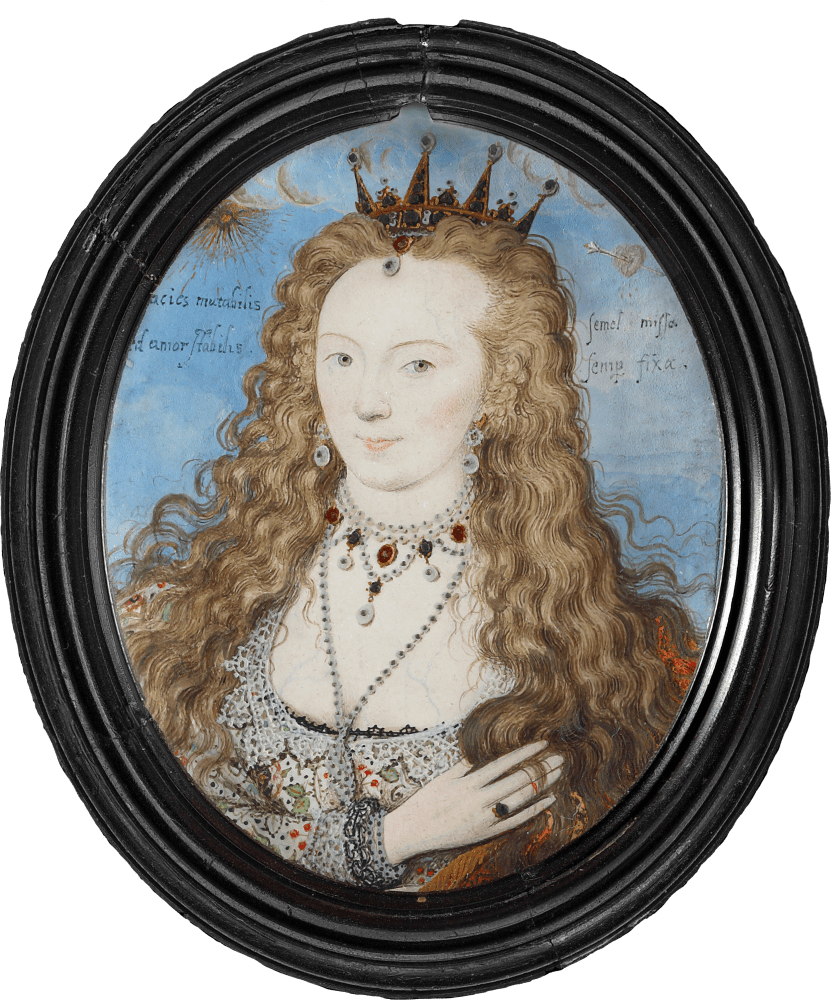
Nicholas Hilliard (1547-1619)
A lady, traditionally identified as Elizabeth (1588-1633), née Stanley, Countess of Huntingdon, c.1603-1615
Going at least as far back as the eighteenth century, when Sir Horace Walpole owned this miniature, it has been identified as a portrait of Lady Elizabeth Stanley (1587–1633), third and youngest daughter of Ferdinando Stanley, 5th Earl of Derby, and his wife, Alice, née Spencer. Via her father, Elizabeth was – like her elder sisters, Anne and Frances – a direct descendant of Henry VII and, thus, in her youth a potential successor to the ageing and childless Queen. On 15 January 1601, Elizabeth married Henry Hastings, who became 5th Earl of Huntingdon on the death of his grandfather in 1604. No certain image of the young Elizabeth is known to survive for purposes of comparison with this miniature. But an engraved portrait of the mature Elizabeth by John Payne printed in 1635 (two years after her death) as the frontispiece to ‘A Sermon Preached at Ashby-de-la-Zouche’ depicts a woman with a similarly prominent nose, broad forehead, wide-set eyes and high, recessed hairline.
Hilliard’s sitter is portrayed with long, flowing hair: an indication either that she was unmarried at the time this likeness was created or, if married, that she has been portrayed in masquing attire. The latter seems the more likely scenario, particularly if the traditional identification of the sitter is accepted: Elizabeth Stanley was married at the age of about fourteen and the lady portrayed here looks to be slightly older, perhaps in her late teens. The sitter’s headwear, like her loose hair, is also evocative of the world of the late Elizabethan and early Jacobean court entertainment. What Hilliard has depicted here is probably either an ‘attire’ or a ‘circlet’, examples of which are recorded in the inventories of Anne of Denmark, the greatest patron of the early Stuart court masque.
Elizabeth – like her mother and both of her sisters – was an enthusiastic patron of the masque and other forms of courtly drama. In 1603, ‘Ladie Hastings’ (as Elizabeth then was) accompanied Anne of Denmark on her progress south from Edinburgh to London for her coronation as Queen of England, pausing en route to partake of numerous masques and other entertainments laid on within the confines of aristocratic residences, including Althorp, in Northamptonshire, where Elizabeth’s mother, Alice (née Spenser), mounted a spectacular series of festivities, including a newly commissioned masque by Ben Jonson. In 1607, Elizabeth commissioned John Marston to devise an elaborate masque for performance at her marital home, Castle Ashby, in Northamptonshire, for which Marston represented her as Selas, ‘the grace of the Muses’. Elizabeth was also one of several aristocratic ladies who, alongside Queen Anne, performed in Jonson’s Masque of Queens at Whitehall Palace in 1609. Presumably, too, masques or other dramatic entertainments were amongst the festivities laid on for James I when he visited Castle Ashby during the summer progresses of 1605 and 1612.
Find out more
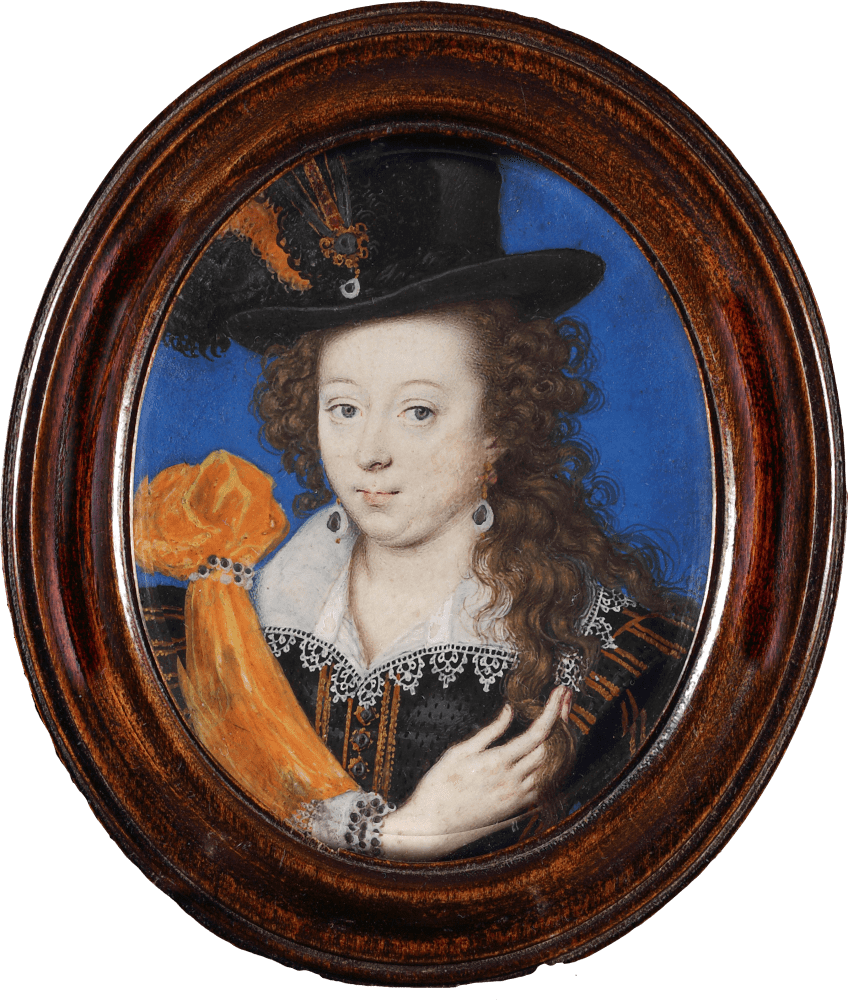
Isaac Oliver (c. 1565-1617)
A young lady wearing a masculine-style black and orange doublet and black hat (with hat jewel) and an orange sash, c.1600-1615
This exceptionally vibrant miniature is in extraordinarily good condition. Its colours – most notably, its brilliant oranges, which ‘pop’ against Oliver’s solid blue background and against the black elements of the sitter’s dress – are virtually unfaded and undimmed with the passage of time.
The identity of the sitter, who has chosen to be portrayed in an androgynous fashion, is unknown. But her attire and general self-presentation are suggestive of a spirited, perhaps slightly rebellious nature. Flowing tresses worn down rather than up were a sign that a lady was unmarried (or in masquing costume). Yet the ‘love lock’, in which one section of hair was left to grow longer than the rest so that it could be brought forward – as depicted in this miniature – was predominantly a male fashion. In short, Oliver’s sitter seems to be the sort of young lady the anonymous author of the 1620 pamphlet Hic Mulier (‘The Man-Woman’) had in mind when railing against the ‘insolencie of our women, and theyre wearing of brode brimd hats [and] pointed dublets’.
Certainly, the broad-brimmed hat and pointed doublet worn by this sitter are masculine in style. As is clear from both written and visual evidence, ladies at the late Elizabethan and early Jacobean courts often donned such attire for hunting, as may be seen in Paul van Somer’s life-sized oil painting of Anne of Denmark with her horse and hounds (1617), now in the Royal Collection. Sometimes, too, ladies wore such garb when ‘in character’ for a court masque or other entertainment. For example, the text of Ben Jonson’s Masque of Queens – performed at Whitehall Palace in 1609 by Queen Anne and eleven noblewomen – indicates that Hypsicratea, Queen of Pontus made her entrance wearing ‘a masculine habit’.
Find out more
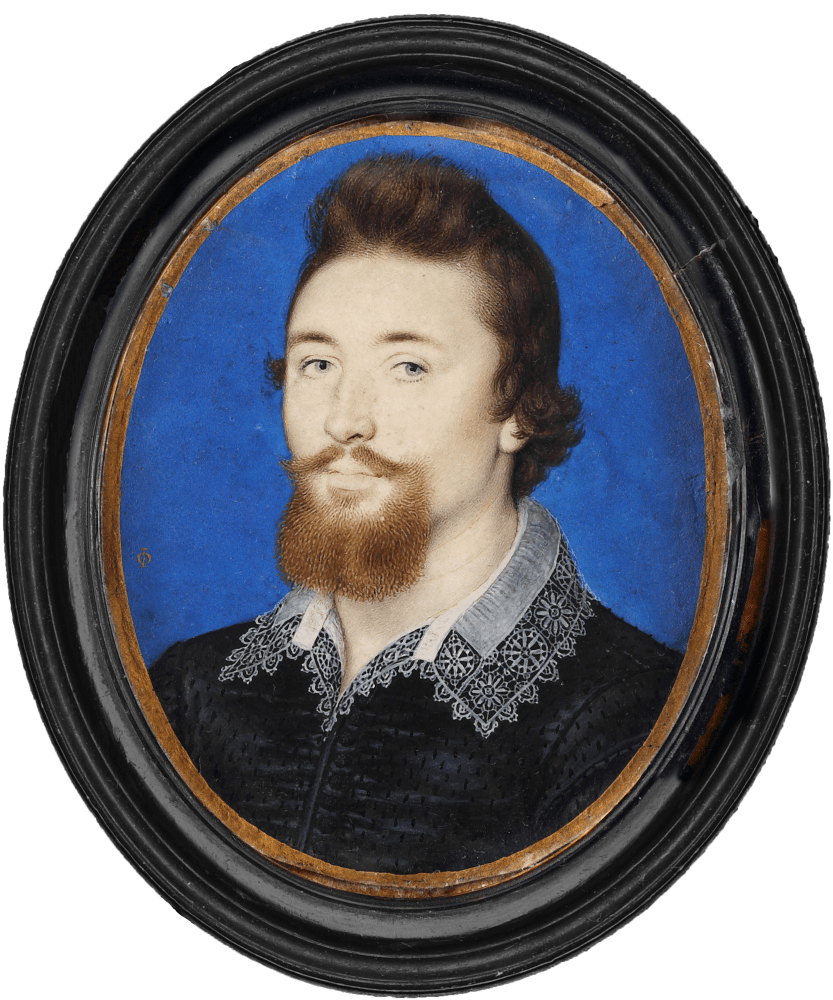
Isaac Oliver (c. 1565-1617)
A man, probably a follower of Elizabeth I’s favourite, Robert Devereux, 2nd Earl of Essex, c.1595-1600
This is an exceptionally crisp and vivid example of Oliver’s art. Note, for example, the delicacy with which the individual hairs in the sitter’s beard, moustache and eyebrows (and on his proper left temple) have been rendered. Note, too, the careful delineation of each individual eye lash. In many ways, this portrait is comparable to Oliver’s virtuoso cabinet miniature, signed ‘IO’ and dated 1598, depicting The Browne Brothers: Anthony Maria Browne, 2nd Viscount Montague, flanked by his younger brothers, John and William, with an unidentified man (perhaps a servant) standing off to the right (Burghley House). In both works, Oliver has depicted his sitters’ black doublets and white collars with great precision, down to and including the intricate geometrical patterns of the lace edging on their collars.
It has been suggested that the sitter in this miniature might be Francis Hastings (1560–1595), eldest son and heir of George Hastings (1540–1604), 4th Earl of Huntingdon. The basis for such an identification is unclear, but may owe something to the fact that several late sixteenth- and early seventeenth-century English miniatures collected by Lord Bearsted traditionally have been identified as individuals with links to the Hastings earls of Huntingdon. No secure image of Francis Hastings – who, had he not died before his father, would have become 5th Earl of Huntingdon – is known to survive. However, the square-cut beard sported by this sitter makes such an identification unlikely. Hastings died in 1595, whereas the fashion for beards like this one did not take off at the Elizabethan court until late 1596, when Robert Devereux (1565–1601), 2nd Earl of Essex, returned to England in triumph after the sack of Cadiz, having, in the words of the Venetian ambassador to England, begun ‘to grow a beard, which he used not to wear’.
Essex himself also has been proposed as the sitter. It is true that Essex, shortly after his return from Cadiz, commissioned Oliver to create a template for the production of portrait miniatures not dissimilar to this one, the ‘face of Cadiz’ having been an integral part of Essex’s attempts, in the second half of the 1590s, to position himself as a serious political and military leader. Indeed, Essex seems to have been the first non-royal patron to have commissioned replica portrait miniatures in bulk for distribution at the English court. Examples – dateable to c. 1596–98 and closely related to an Oliver drawing of c.1596 now at the Yale Center for British Art – may be found in the Royal Collection, the National Portrait Gallery, the V&A, and at Burghley House.

